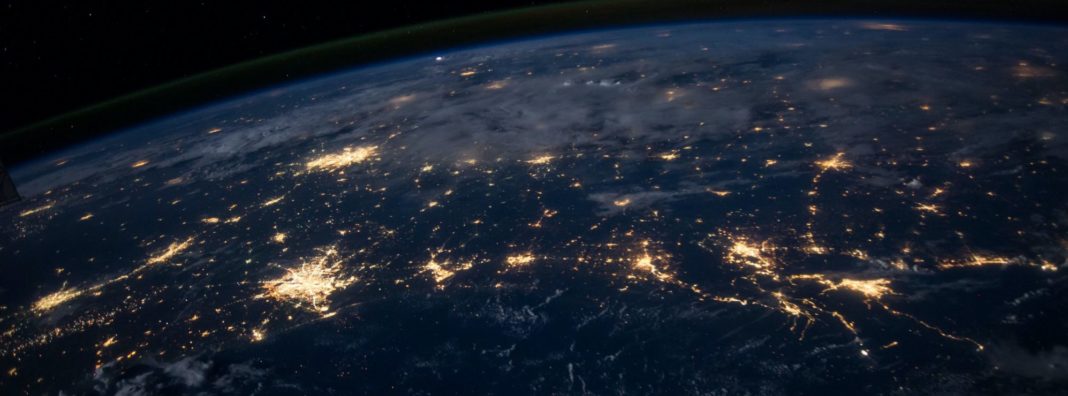
Earth Day turns 50 years old today. First celebrated in 1970, it is the closest thing the modern environmental movement has to a birthday. And while social distancing and closed parks are preventing many of us from celebrating the way we’d like, the pandemic has given us an interesting insight into the impacts of our day-to-day lives on the environments in which we live.
If you happen to live in a big city, chances are the skies seem a little bluer than usual lately. Metropolitan areas across the country, from L.A. to New York, are experiencing record-breaking stretches of clean air days. That’s because the main culprits of air pollution — cars, airplanes, construction equipment, and the like — have mostly been abandoned as a result of the global pandemic.
The current situation not only serves as a reminder that we still have plenty of work to do to improve the air quality in our cities but also highlights the high economic cost of doing so. Yes, our skies are currently cleaner than they have been in decades, but millions of Americans are out of work, and millions more will be made worse off because of the economic downturn. That does not mean, however, that the environment has to suffer in the name of economic progress.
A look back at the strides we have made towards cleaning up the environment since Earth Day was first celebrated tells the opposite story. As we have grown more prosperous as a society, technological innovation has improved not only economic outcomes but has also reduced our dependence on dirtier, less efficient forms of energy. As a result, our waterways are cleaner, our skies continue to grow less polluted, and increasingly more Americans have access to affordable energy. Innovation is the link between economic growth and better environmental outcomes. Three major innovations from the past 50 years — hydraulic fracturing, nuclear power, and lithium-ion batteries — can help to illustrate that point.
Hydraulic Fracturing
It may seem weird to begin this list with a technology that has increased our access to fossil fuels, but natural gas is the unsung hero of recent carbon emission reductions because it has lessened our dependence on coal. Coal-fired energy generation is a major source of carbon emissions and other dangerous particulate matter. In contrast, energy production from burning natural gas results in about 50% less carbon dioxide released per unit of energy than burning coal and far lower levels of particulate matter.
The fracking boom, which began in 2007, led to massive increases in oil and natural gas production. By 2017, thanks to those increases, natural gas surpassed coal as the number one source of electricity generation in the U.S. Last year alone, coal-fired power generation dropped by 18%, and overall U.S. carbon emissions fell by 2.1%. The U.S. Energy Information Administration (EAI) estimates another decline of 2% this year, followed by a decline of 1.5% in 2021. The chart below shows U.S. greenhouse gas emissions since 1990. Notice the steep decline in emissions following the beginning of the fracking boom.
Natural gas has, in fact, done more to reduce U.S. carbon emissions over the past decade than any other energy technology. In addition to reducing our reliance on coal, natural gas has also enabled the growth of renewable energy. In a 2018 paper, economists Elena Verdolini, Francesco Vona, and David Popp found that countries with a larger deployment of modern fossil fuel generation such as combined-cycle natural gas plants had significantly higher investment in renewable energy. That is likely due to the fact that these plants can ramp up energy production quickly to compensate for the variability of wind and solar grid systems.
Nuclear Energy
Although natural gas is significantly less bad for the environment than coal, it’s not perfect. Many see it as a bridge fuel — a way to decrease our current carbon footprint as we transition to cleaner energy sources. One of those sources, nuclear energy, began to play a prominent role in U.S. energy production around the time the country was celebrating its first Earth Day. Today, nuclear power makes up 20% of U.S. energy production. It is the single largest carbon-free source of energy we have in this country — by a long shot. Wind and hydropower come in second and third, each producing around 7% of the country’s energy.
Most operational nuclear power plants in the U.S. today were built in the ’70s, and many are now approaching the end of their certified life cycle. In the meantime, advancements continue on a smaller scale. New smaller reactors promise to be even safer than traditional plants, as well as cheaper and more efficient.
Lithium-Ion Batteries
The final technology on this list has perhaps the largest potential of the three to change the way we produce and consume energy in this country. Lithium-ion batteries, which are used to power everything from your cell phone to the Tesla Cybertruck, were first commercialized by Sony in 1991. Since their commercialization, they have opened new pathways to energy storage previously impossible to achieve. These opportunities include long-range electric vehicles and massive energy storage for intermittent energy-producing technologies like wind and solar.
The falling cost of lithium-ion battery cells
Although consumer electronics have accounted for the majority of lithium-ion battery production since the ’90s, recent demand for batteries to power the green energy revolution has re-invigorated the technology. In 2010, lithium-ion cells for electric vehicle batteries cost $1,000 per kilowatt-hour. Last year the cost had fallen to between $130 and $200 thanks to demand-driven innovation. That has major implications for the future of electric vehicles and energy storage, as the batteries themselves are still the most expensive component of those systems. The U.S. Department of Energy expects those costs to fall even further in the coming years, opening up even more possibilities for green energy and transportation that is more reliable and affordable than ever.
Innovation and Environmental Stewardship go hand-in-hand
As we look at where the next 50 years and beyond of environmental progress may take us, there is no doubt a significant amount of work still to be done. Our rivers and skies are vastly cleaner than they were in 1970, but pollution still poses a major health concern in the U.S.and around the world. Climate change is drastically changing ecosystems. Wildfires are becoming a growing threat. Plastic waste continues to build up in our oceans.
But if you have been paying attention to the progress that we have made as a society in the past 50 years, you should have hope for the future. Someday, the clean air and blue skies we are seeing in cities during the current pandemic will be the norm, without the accompanying economic shut-down. So as we raise our glasses to toast 50 years of environmental progress, let us also toast to 50 years of economic growth. Because it is that growth which has enabled us to be greater stewards of the natural lands we hold so dear.




